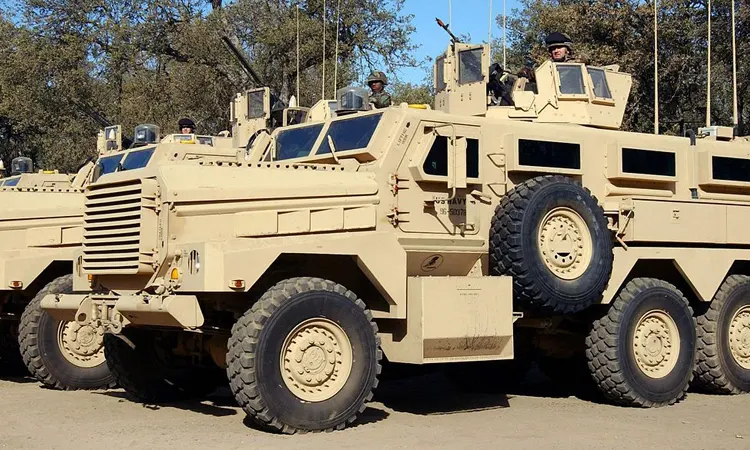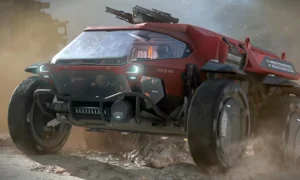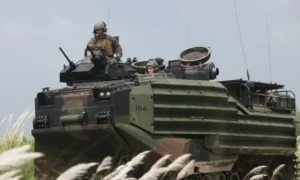Okay, imagine this you’re in a convoy inching down some sketchy backroad, everyone tense as hell, side-eyeing every pile of trash like it’s about to blow sky-high. Suddenly kaboom roadside bomb lets loose. But get this: the soldiers inside? Yeah, they’re rattled, maybe ears ringing, but they’re walking away. Not a scratch. That’s not just dumb luck; that’s Ambush Protected Vehicle magic, or APV if you wanna sound like you’ve actually seen one. These aren’t your granddad’s armored trucks. Nah, they’re more like pissed off tanks disguised as trucks rolling fortresses basically daring the enemy to try harder. Landmines? Please. Ambushes? As if.
Seriously, whether you’re slogging through Iraq’s dusty nowhere or bouncing around Afghanistan’s moonscape, names like Cougar, Buffalo, and MaxxPro aren’t just gearhead trivia they are what stand between troops and a whole lot of hurt. Heavy armor? Check. Smart design that actually pushes blasts away from the crew? Oh yeah. Firepower that says “not today, insurgents”? You bet.
Anyway, in this guide, I’m gonna drag you through the backstory, the nuts and bolts, how these beasts get used in real life, and why people geek out over them long after the shooting stops. Whether you’re a collector, a history nerd, or just want to know how the heck anyone survives modern ambushes, strap in. We’re about to go full throttle into the wild world of Ambush Protected Vehicles.
Military Vehicles On Miltrade.com
History and Evolution of APVs
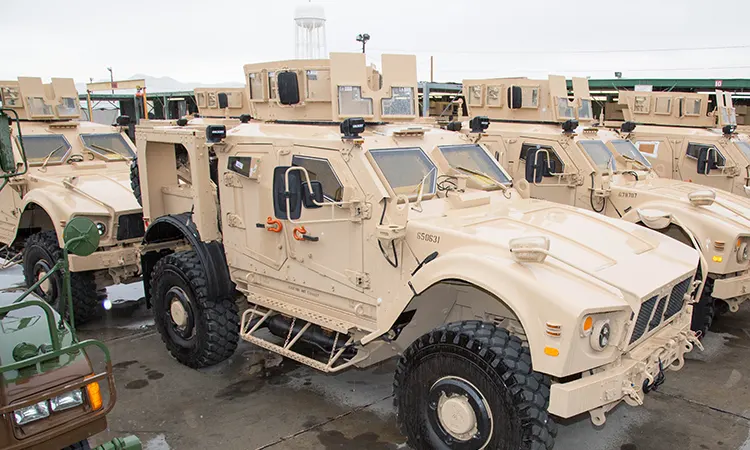
Alright, buckle up here’s the real scoop on these Ambush Protected Vehicles (APVs), minus the textbook snooze fest.
The Birth of APVs
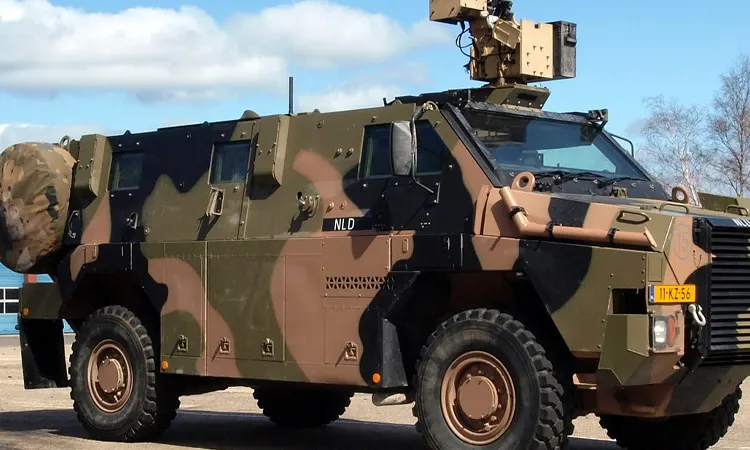
So, APVs didn’t just pop up because someone thought, “Hey, let’s make a beefier Humvee.” Nope. Troops kept getting smacked by IEDs and mines while rolling through places like Iraq and Afghanistan, and regular armored rides? Honestly, about as useful as a screen door on a submarine. Something had to give.
Cue the APV. These things were built like tanks with a PhD in not getting blown up. The magic? That V shaped belly. It doesn’t just look cool it actually kicks blasts away from the people inside. Suddenly, soldiers had a way better shot at making it home, even when the road ahead was sketchy as hell.
Military Tanks On Miltrade.com
Key Milestones

Let’s talk OGs. The Cougar MRAP yeah, that one started showing up in the early 2000s, heavy and tough, like the linebacker of military vehicles. The Buffalo MRAP? Massive, with this wild extendable arm for poking around for bombs, like some kind of metal detective on steroids. And the MaxxPro? Basically the go-to ride for convoys, mixing armor with enough mobility to not get stuck every five feet.
Modern APVs
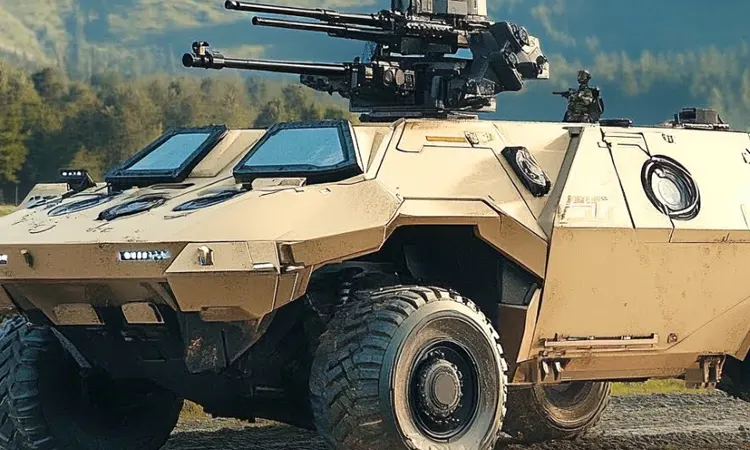
Fast forward to now, and APVs aren’t just “mine proof trucks” anymore. It is like they hit the gym, took some night classes, and learned how to multitask. You’ll find them loaded with comms gear, modular add-ons, serious firepower you name it. They’re not just surviving the bad stuff; they are running the show on the battlefield.
Long story short: APVs went from being a desperate fix to absolute legends, saving lives and looking mean while doing it.
Military Jeeps On Miltrade.com
Design and Technical Features
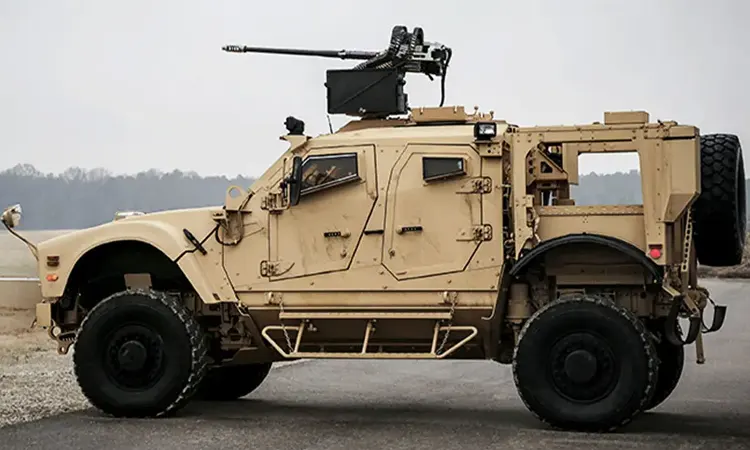
Ambush Protected Vehicles are designed to survive unfriendly terrain, combining armor, mobility, and firepower in ways no ordinary vehicle can. Here’s why an APV is so dominant on today’s battlefield:
Armor and Blast Protection
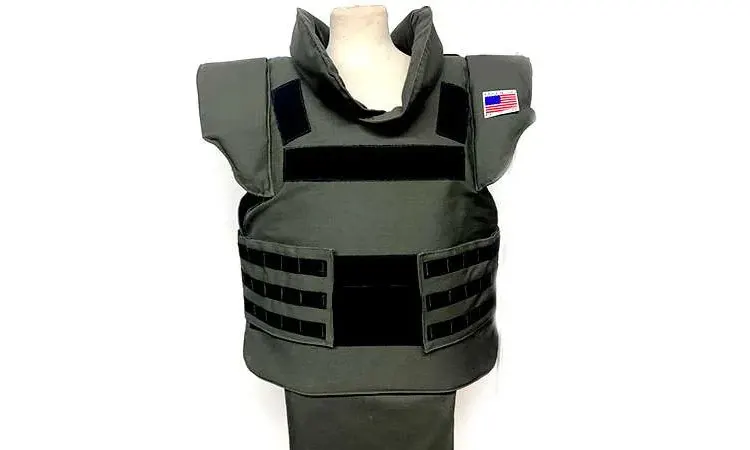
V Shaped Hull: APVs’ distinctive feature, designed to deflect mine and IED blasts away from crew compartment.
Composite and Reinforced Armor: Protects against small arms fire, grenades, and explosives.
Crew Protection: Blast resistant windows, shock-absorbing seats, and reinforced floors maximize troop survivability.
Mobility and Terrain Capabilities
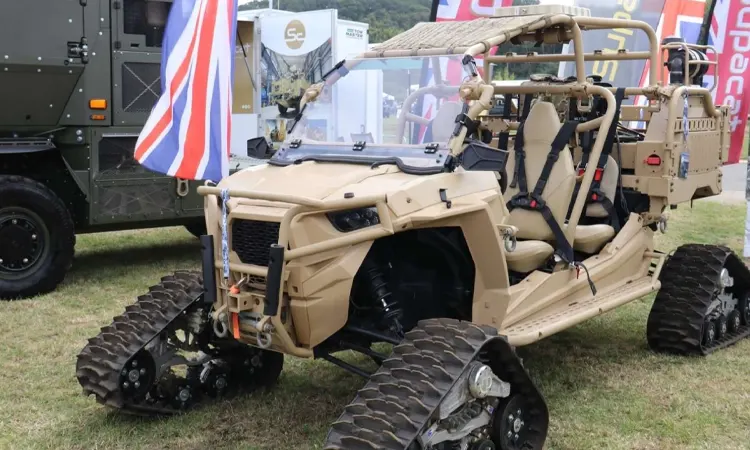
Engine Power: Powerful diesel engines in APVs allow for rapid movement across urban, desert, or mountainous environments.
Wheeled vs. Tracked Configurations:
Wheeled APVs like the MaxxPro facilitate high-speed convoy travel and road access.
Tracked APVs provide greater stability in irregular or off road environments.
Armament and Fire Support
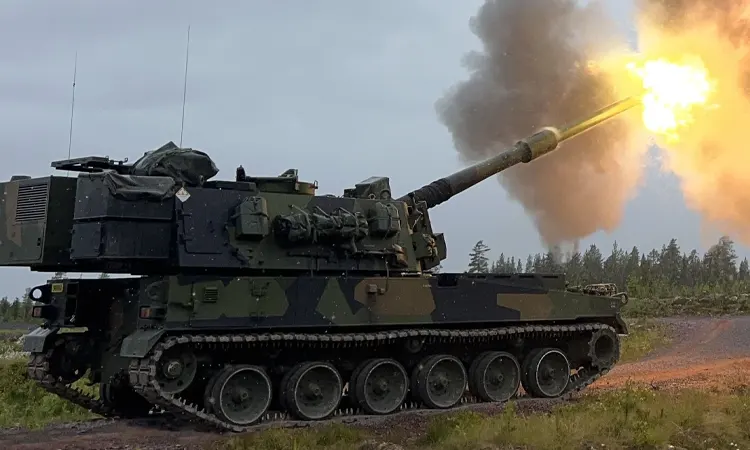
Turreted Weapons: Remotely controlled turret guns with machine guns, grenade launchers, or even light cannons are used in the majority of APVs.
Anti Tank Options: Vehicle mounted TOW missiles or similar systems are frequently used to fire at armored targets.
360° Visibility: Sophisticated periscopes and cameras allow crews to stay alert and respond quickly in the case of an ambush.
Modern Technology
Advanced Communication Systems: Encrypted radio and satellite communications for real time coordination.
Navigation and Targeting: GPS integration, laser rangefinders, and thermal optics improve combat effectiveness.
Modularity: Next generation APVs are modularly equipped for troop transport, medevac, reconnaissance, or fire support, depending on the requirement of a mission.
How APVs Protect Troops
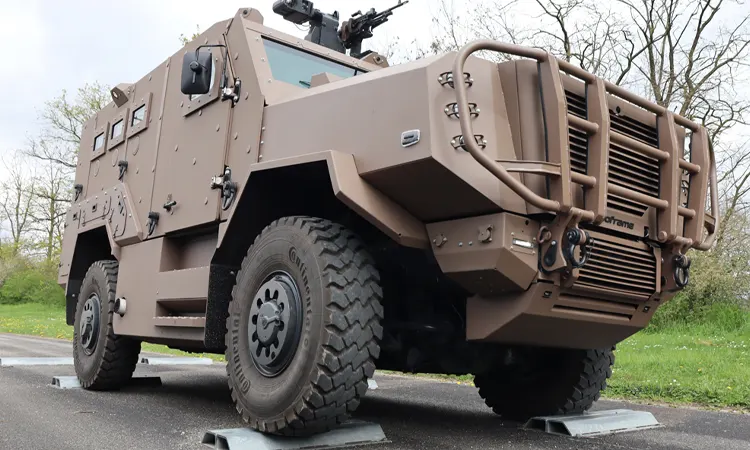
Ambush Protected Vehicles (APVs) are built to withstand the most challenging that the battlefield has in store. From roadside bombs to small arms fire, these vehicles give soldiers a fighting chance and save their lives. Here’s how APVs are used in real combat operations:
Russian Military Vehicles On Miltrade.com
Urban Operations
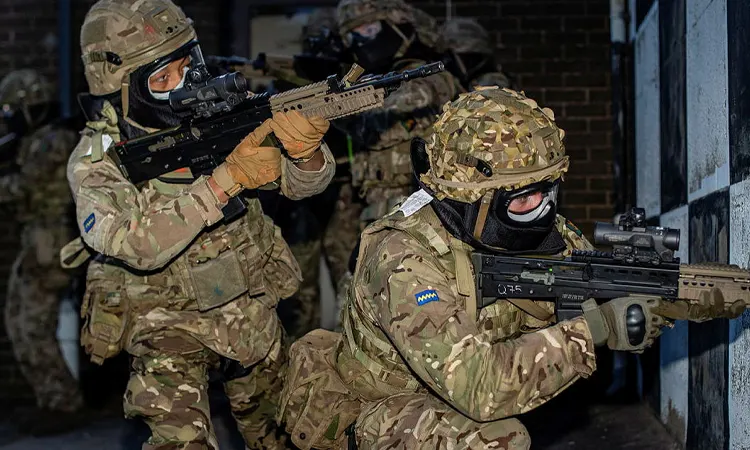
In Baghdad, for example, APVs transport troops across enemy urban roads safely.
Remote controlled gun turrets and body armor positions allow troops to engage threats without being in the direct line of fire.
APVs provide protection to infantry, allowing them to dismount safely and complete tasks.
Desert & Open Terrain
The MaxxPro and Cougar vehicles travel easily over desert roads and harsh terrain without compromising the safety of soldiers and maintaining high mobility.
Their armor and blast performance make them nearly immune to mines that can easily obliterate regular vehicles.
Convoy & Logistic Support
APVs ride along with supply convoys into battle areas, reducing ambush or roadside bomb casualties.
Sensor and communication systems attached to APVs allow threats to be identified and eliminated before injuring troops or supplies.
Reconnaissance and Special Operations
Some APVs are designed for reconnaissance operations, allowing small units to move into enemy areas in security.
With their sophisticated sensors, cameras, and light arms, they collect valuable information with minimal risk of injury.
Owning a Piece of Modern Armored History
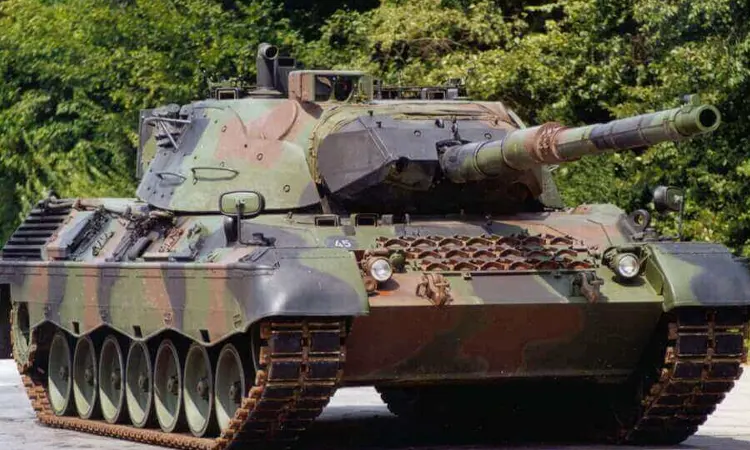
Okay, listen up Ambush Protected Vehicles aren’t just hulking beasts rolling through warzones. They are straight up legends in military tech. For collectors and hardcore military buffs, APVs are basically like the holy grail chunky snapshots of how armies got smarter and tougher, dodging death traps across the globe.
So, Why Do Collectors Go Nuts For APVs
| Vehicle | Role | Key Feature | Collector Appeal |
|---|---|---|---|
| Cougar MRAP | Convoy Protection | Heavy V shaped hull | Highly valued for battlefield history |
| Buffalo MRAP | IED Disposal | Bomb detecting mechanical arm | Rare parts sought by collectors |
| MaxxPro MRAP | Troop Transport | Balanced mobility & armor | Popular in scale models & manuals |
So, Why Do Collectors Go Nuts For APVs?
First off, the history. Every single one of these things is like a time capsule from the age of high-tech warfare. You want to see how troops stopped getting blown up by roadside bombs? Look at these bad boys.
And the lineup? Oh man, it’s wild Cougar, Buffalo, MaxxPro… name a flavor, there is probably a model for it. Each has its own vibe and battlefield backstory.
But here’s the kicker: If a vehicle (or even just a chunk of it) actually saw action in Iraq, Afghanistan, or any other hotspot, collectors lose their minds. The closer it got to the real deal, the more bragging rights.
What’s Actually Collectible?
Tiny models yeah, the scale replicas. Nerdy, but cool. They show off all the gnarly hardware and weird design choices.
Actual parts Turret? Armor panel? Suspension ripped from a real deal APV? That is the stuff that gets collectors drooling.
And don’t forget the human touch: helmets, beat up gear, dog eared manuals anything the original crews used. That’s like an instant connection to the battlefield.
Why Bother?
Honestly, it is not just about hoarding giant toys. This is about keeping the story alive. Every dented panel or battered instruction booklet is a piece of the puzzle how soldiers stayed alive, how tactics changed when the enemy stopped playing by the rules, and how engineering kept trying to stay one step ahead.
So yeah, collecting APVs? It’s history with attitude. And maybe a little bit of Mad Max thrown in for good measure.
Conclusion
Honestly, the Ambush Protected Vehicle isn’t just some hunk of metal on wheels it’s basically the poster child for staying alive when things get messy. You look at one of these beasts and you see years of clever thinking, last-minute fixes, and the kind of wild ideas only a battlefield can cook up. And hey, its story didn’t just stop when the shooting did. Collectors are out there snapping up everything from tiny die-casts to actual parts, just to keep that legend rolling. Miltrade’s got the hookup too. Whether you want a desk toy or a chunk of real deal armor, you can snag a piece of this wild saga because honestly, APVs didn’t just change military tech; they rewrote the whole playbook on survival.
FAQs
Why did APVs like Cougar and MaxxPro become so critical in Iraq and Afghanistan?
Because regular armored vehicles couldn’t handle IEDs and ambushes, the Cougar and MaxxPro offered life-saving protection with their V-shaped hulls and reinforced armor.
Are there still original APV parts or manuals available for collectors today?
Yes. Collectors can still find authentic APV parts, manuals, and gear from trusted sources like Miltrade, where battlefield history is preserved through original artifacts.
What makes Miltrade a trusted source for finding authentic APV-related gear?
Miltrade carefully curates military collectibles, ensuring authenticity and providing access to rare APV-related items like armor panels, field manuals, and crew equipment.
How do scale models compare to actual APV vehicle parts in collector value?
Scale models are popular for display and detail, but real APV parts such as armor fragments or turret pieces carry far greater historical and collector value.
Can owning an APV relic really connect you to modern battlefield history?
Absolutely. Each dented armor plate or crew manual tells a direct story of survival and tactics in Iraq or Afghanistan, making ownership a personal link to history.
